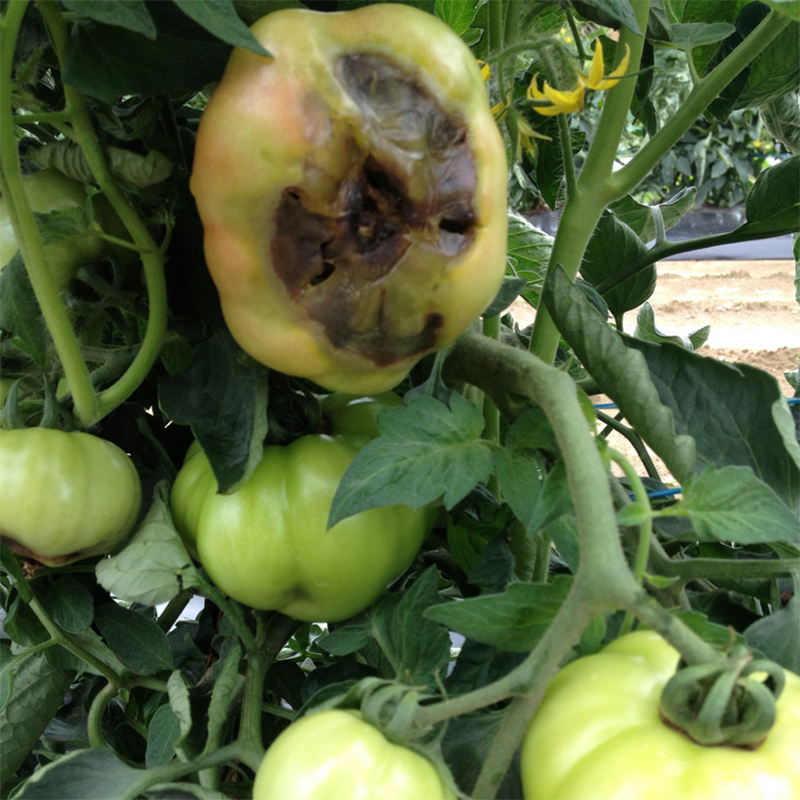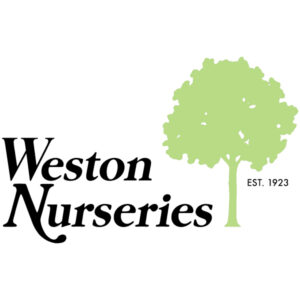Blossom end rot is a noninfectious, physiological disorder of tomatoes and peppers, caused by a localized calcium deficiency in the blossom-end of the fruit.
On both tomato and pepper, symptoms of blossom end rot first appear as light-tan, water-soaked lesions, usually on the distal end of the fruit but occasionally on the side of the fruit. The lesions then enlarge and become black and leathery, and are often invaded by Alternaria alternata, a saprophytic fungus that attacks dead tissue. In tomato, internal black lesions may also develop, which are sometimes not visible until the fruit is cut open. Affected fruit usually ripens faster than normal. Blossom end rot symptoms are similar to those of sunscald, however sunscald will only occur on the side of the fruit that is exposed to the sun, while blossom end rot can occur on unexposed fruit surfaces.
Blossom end rot is caused by a localized calcium deficiency in the distal end of the fruit. Calcium is a relatively immobile element; calcium-uptake is therefore heavily influenced by anything that affects water uptake by a plant. Early fruit on young plants are most susceptible, because as young plants become established and begin growing more rapidly, they require more water and calcium.
Calcium deficiency and, subsequently, blossom end rot, is caused by any disruption of water-uptake. Lack of water, even short-term, especially after heavy rainfall, will result in reduced calcium intake. High humidity, which causes a reduction in evapotranspiration and water uptake in plants, will have the same effect. High soil salt levels, applications of ammonium nitrogen, and root pruning or damage can also contribute to calcium deficiency. Excessive nitrogen application under conditions that promote blossom-end rot will exacerbate the problem. Additionally, blossom end rot can be a symptom of herbicide injury from phenyoxy (e.g. 2,4-D) and substituted benzoic acid (e.g. dicamba) herbicides.
Cultural Controls & Prevention
- Test your soil to determine whether or not calcium levels fall within the recommended range. Visit the UMass Soil & Plant Nutrient Testing Laboratory website for more information.
- 2-4 months before planting, lime with dolomitic or high-calcium limestone.
- If you determine that your soil has low calcium levels or high salt levels during the growing season, foliar spraying with anhydrous calcium chloride can help amend the problem
- Provide your crop with proper fertilization, and avoid products with high levels of potassium, sodium, magnesium, and ammonium, as they will compete with calcium for uptake.
- Ensure that your plants are watered evenly by means of proper irrigation.
- Provide proper drainage in your fields to avoid causing root disorders that will result in reduced water uptake.
- Choose cultivars that have tolerance to the conditions that lead to blossom end rot. For peppers, shorter, rounder varieties tend to have more tolerance than longer varieties. For tomatoes, varieties Jet Star, Burpe VF, Better Boy, Early Girl, Flora-Dade, Floramerica and Walter have been reported to have more tolerance than others.
Crops that are affected by this disease:
Pepper
Tomato, Field
Tomato, Greenhouse
Source: UMass Amherst Center for Agriculture, Food and the Environment
–Adapted by G. Higgins from the Compendium of Pepper Diseases, eds. K. Pernezny, P. D. Roberts, J. F. Murphy, N. P. Goldberg, and the Compendium of Tomato Diseases and Pests, 2nd ed., eds. J. B. Jones, T. A. Zitter, T. M. Momol, S. A. Miller.
Other Sources:
Blossom End Rot(link is external), Cornell University Department of Plant Pathology and Plant-Microbe Biology
Blossom-End Rot(link is external), New Mexico State University Cooperative Extension Service








